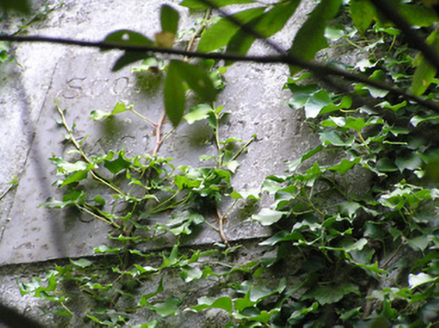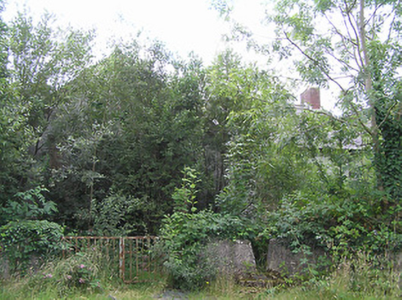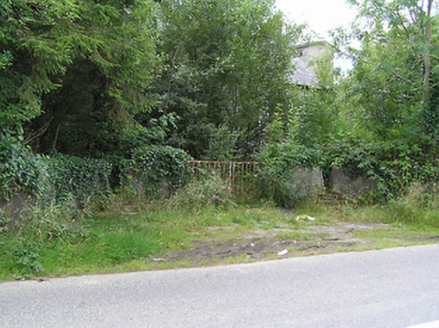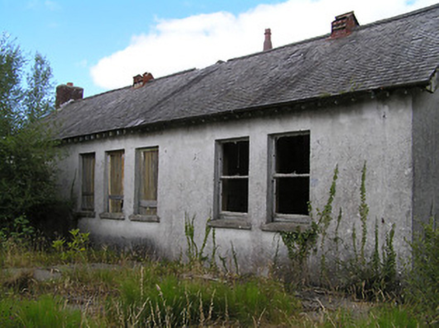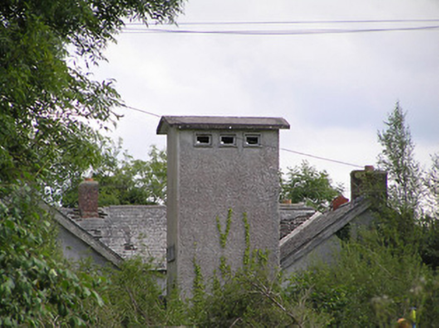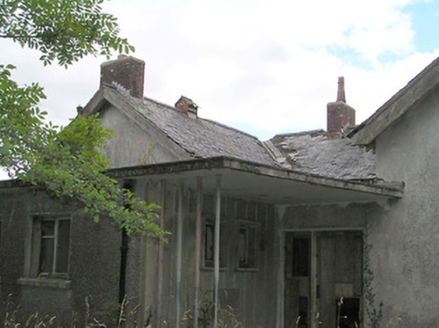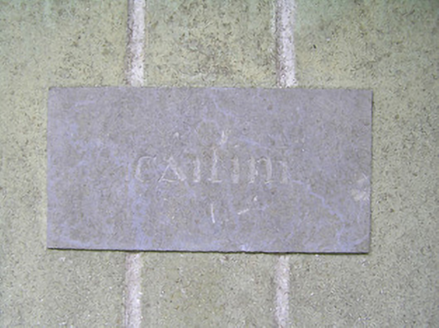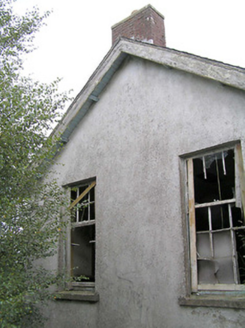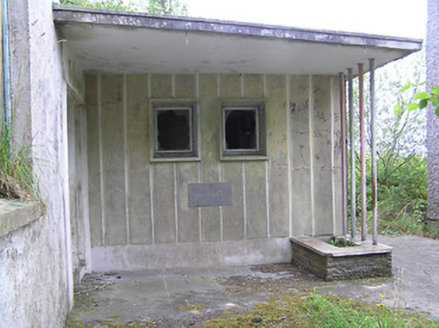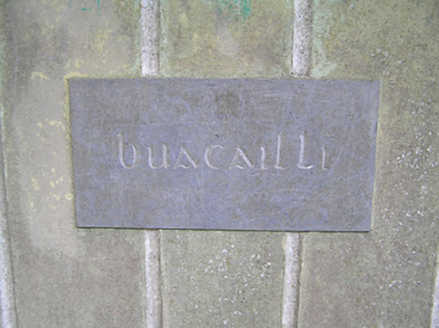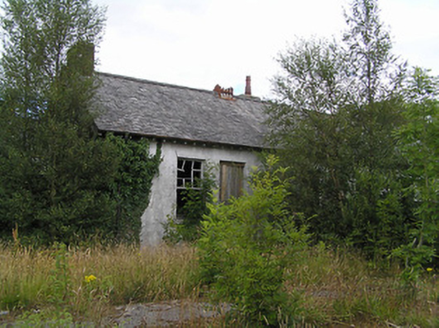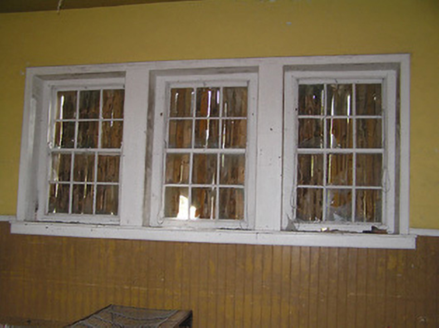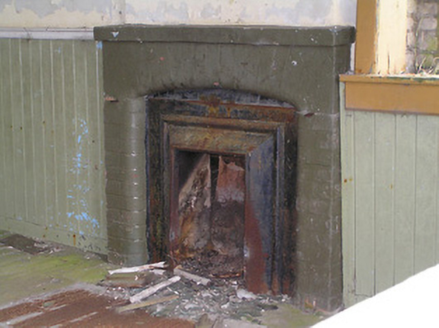Survey Data
Reg No
13302006
Rating
Regional
Categories of Special Interest
Architectural, Social
Previous Name
Saint Mary's National School
Original Use
School
Date
1920 - 1950
Coordinates
215613, 285673
Date Recorded
26/07/2005
Date Updated
--/--/--
Description
Detached seven-bay single-storey former H-plan primary school, built c. 1930 and extended c. 1950, having parallel ranges running east-west, joined by north-south range forming gabled breakfront to front elevation, and having lower single-storey flat-roofed entrance extensions to east and west side elevations. Water tower on square-plan to site. Now disused. Pitched slate roofs with red brick chimneystacks, cast-iron roof vents, and timber eaves. Oversailing flat roofs to extensions, supported by steel poles. Rendered walls, painted channelled rendered walls to extensions. Square-headed window openings, with remains of six-over-six pane timber sliding sash windows to main elevations, nine-over-six pane to gables, and with concrete surrounds to extensions. Square-headed door openings with replacement timber doors. Retains interior features. Playground to rear centrally divided, divided play shelter to south of playground. Set back from the road in own grounds to the northeast of Drumlish. Replaced by modern school to the south, along Hill Street.
Appraisal
Although now derelict, this former school building retains much of its fabric and its overall structure and form. Its present form is the result of the combination of a H-plan block, with typical tall windows high ceilings, with later, candidly modern cloakroom extensions. The original symmetrical school building is typical of the standard school buildings designed and built in great numbers by the Office of Public Works for the Board of Education during the first decades of independence. The six-room schoolhouse indicates that there was a large young population in the Drumlish area in the early-twentieth century. The separate entrances for boys’ and girls’, and the division of the playgrounds and the play shelter in two, would have been typical of the separation of the sexes in rural schools during the first half of the twentieth century. This interesting and quite complex school building is an integral part of the built and social heritage of the local area.
